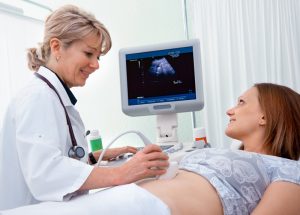Diagnostic & Screening Tests
Pelvic and abdominal ultrasounds are performed in our office every Wednesday by a trained and experienced ultrasound technician. Ultrasound is a helpful tool used to diagnose gynecologic conditions such as ovarian and uterine masses, abnormal uterine bleeding and pelvic pain.
Ultrasound reports will be reviewed by a physician, and a provider or medical assistant will call to inform you of your results and recommendations within approximately one week. We encourage you to make an appointment for a consultation with your provider to discuss the results of your ultrasound.
A saline-infused sonogram (SIS) is a simple procedure performed in the office that provides a better view of the uterine cavity and the endometrium, the lining of the uterus. It is useful in confirming the presence of endometrial polyps or the location of fibroids in the uterus.
During the SIS, a thin, flexible catheter is inserted through the opening of the cervix into the endometrial cavity. This allows for saline to be introduced into the uterus while an ultrasound probe inserted in the vagina provides an image of the uterus. The introduction of saline allows for better assessment of the contour and shape of the endometrial lining.
Urodynamic testing is commonly prescribed to aid in the diagnosis and proper treatment of various bladder conditions, such as stress incontinence, overactive bladder, urinary frequency and urge incontinence. During this study, a small catheter is placed in the bladder and another in the vagina. The bladder is filled with a saline solution and different measurements are taken to assess bladder capacity, bladder sensations, urethral support, urine leakage and the presence of overactive bladder.
Urodynamic testing is performed in our office and takes about 30 minutes to complete. We may ask you to complete a bladder diary before this procedure. Please bring this paperwork with you to your appointment.
A hysteroscopy is performed by inserting a thin, lighted camera through the cervix and into the uterus to assess the uterine cavity. Hysteroscopy can be used to help identify the cause of abnormal uterine bleeding, to locate and assist in removal of polyps and fibroids, to locate an intrauterine device, and to evaluate the shape and contour of the uterine cavity.
This procedure can be performed in the comfort and convenience of our office utilizing local anesthesia or in the out-patient setting if necessary.

